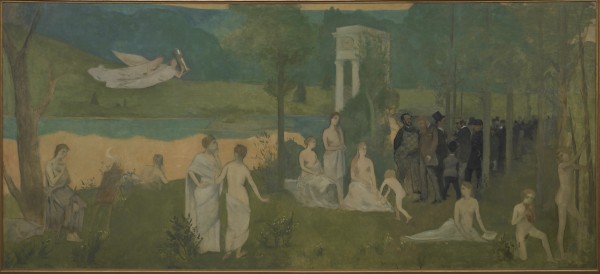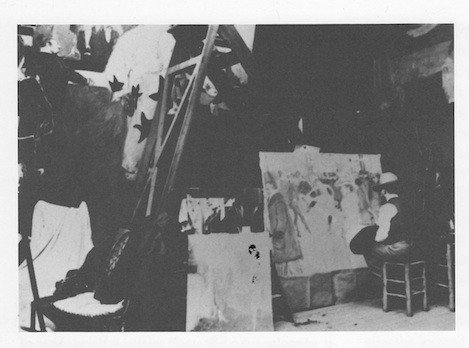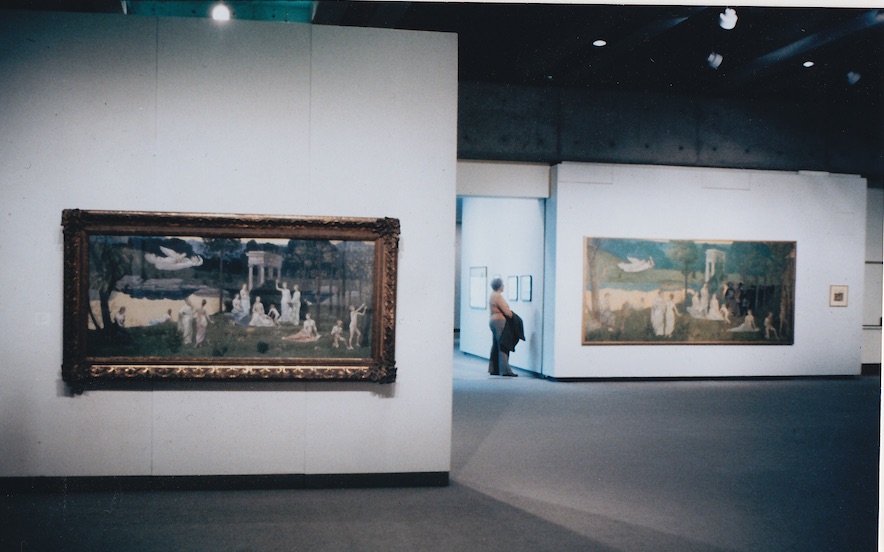The Sacred Grove (Le Bois Sacré)
Provenance
M. Barbazanges, Paris, by 1926. A. M. Marseilles, by 1931. Sold at auction, Hôtel Drouot, Paris, Tableaux Modernes, Aquarelles, Pastels, Dessins…, 30 Mar. 1938, lot 31. Galerie Mouradian et Vallotton, Paris, by 1953; sold to Henry Pearlman, 15 June 1953; Henry and Rose Pearlman Foundation, after 1974.
Photograph of Henri Toulouse-Lautrec in his studio, 1890. The "Sacred Grove" hangs on the right.
[Musée Toulouse-Lautrec, Albi]
Photograph of the 1975 Art Gallery of Ontario exhibition, "Puvis de Chavannes and the Modern Tradition" showing Puvis' "Sacred Grove" in the foreground, left, and Toulouse-Lautrec's parody in the distance, right.
Critical Perspective
Toulouse-Lautrec created this work while studying under the painter Fernand Cormon. The painting parodies Pierre Puvis de Chavannes’s "The Sacred Grove, Beloved of the Arts and Muses," which was awarded the grand prize at the 1884 Paris Salon. Lautrec effectively mimics the style and subject matter of the original but makes significant alterations. Notice the clock on the antique portico and the kneeling adolescent in the corner, eating a loaf of bread. The most irreverent anachronism, however, is the group of men disruptively parading into Puvis's harmonious forest. They include fellow artists, acquaintances, and Lautrec himself, who stands with his back to the viewer - urinating on the ground.
Correspondence with Mrs. Irving Berlin about whether this work includes a reference to her grandmother, Mrs. Mackay, and the painter Jean-Louis-Ernest Meissonier.
Henry Pearlman refers in his reminiscences to making a declaration to the Louvre and carrying this work out of France rolled up, without its frame.



